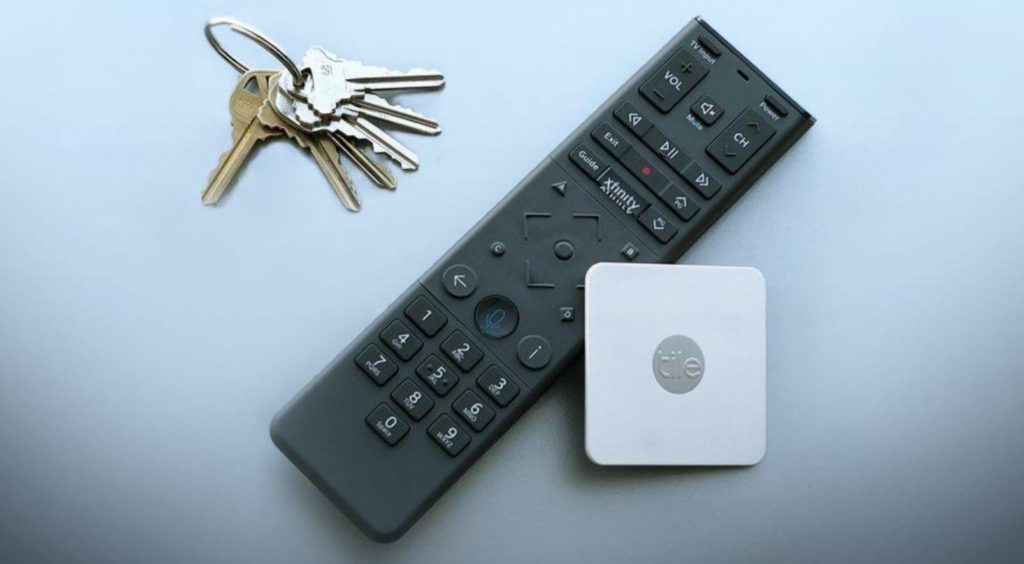 By MassPrivateI
By MassPrivateI
Leave it to cable TV companies to turn voice-activated remotes into smart speaker listening devices.
Billed as a lost item finder, cable TV company Comcast will allow customers to use their Xfinity voice-activated remote to find lost stuff, like car keys and handbags.
With your Tiles connected to the Xfinity Home app, you can use your Voice Remote to ask where your stuff is and see the last known location right on your TV.
A recent article in SlashGear revealed that Comcast has partnered with Tile to let customers use their voice-activated remote to track and locate missing objects.
Tile uses Bluetooth to ping its location, reporting back to a paired smartphone whenever that’s in range. By pairing your Tile account with your Comcast Xfinity X1 account, that location data is shared. After that, you simply press and hold the microphone button on the remote control and as for the location of a specific Tile or whatever it’s attached to.
As SlashGear explains Comcast has turned their voice-activated remote into a portable smart speaker listening device.
All a person has to do is speak into their remote and ask a question like, Xfinity Home, find my wallet, or Xfinity Home, locate my saxophone. The system will recognize keywords like find, locate, or where as trigger phrases for the Tile integration, and the command has to include the actual name of the Tile as it’s registered in the app.
But what Comcast leaves out is how they have turned television remotes into a warped version of Amazon’s Alexa smart speaker, which is always on and listening for keywords or phrases.
It seems like private corporations are masters at obscuring what smart listening devices are really doing.
Tile CEO CJ Prober said, “The average person spends about 15 minutes a day looking for lost items, “We’ve been working with Comcast to alleviate this daily disruption. By allowing Comcast Xfinity customers to use their xFI Gateways and X1 and Flex set-top boxes as finding extenders, the Tile network becomes stronger and ensures users will quickly and easily find lost or misplaced items, bringing convenience to their daily routine.”
I would question Tile’s claims that the average person spends 15 minute looking for a misplaced object[s] every day. Making a specious claim about locating a lost item in your home never justifies letting private corporations listen to and track what goes on inside our homes.
Activist Post Recommended Book: The Age of Surveillance Capitalism
Another thing that caught my attention was how Mr. Prober equated using cable boxes as “finding extenders”, obscuring the fact that they are turning cable boxes into Bluetooth trackers.
As TechCrunch pointed out, Tile uses Bluetooth to “locate some 6 million items daily across 195 countries worldwide, with a 90% success rate in finding lost items. To date, it has sold 26 million Tile devices.”
Comcast allows homeowners to read everyone’s Mac addresses
As the above video illustrates, Xfinity identifies Bluetooth-enabled devices, giving Comcast unimaginable snooping abilities. Comcast’s “Personalizing and Controlling Your Home Network With Xfinity xFi” gives homeowners a glimpse into which devices are connected or were previously connected to your home network.
Comcast allows for viewing the Mac address of nearly every device without a warrant!
Access the hostname or MAC address in your device’s settings. If the default name displayed is a long string of numbers and letters, it’s likely the MAC address.
Comcast is so eager to help people identify any smart device’s Mac address that they setup an Xfinity xFi FAQ which walks them through how to identify them.
Comcast and homeowners can read the Mac addresses of Apple, Android, Windows, Macintosh/Apple (OSX), Windows PC, PlayStation 3, PlayStation 4, Xbox 360, Xbox One. By leaving your Bluetooth setting on, you are letting everyone read your devices’ Mac address.
Think about that the next time you are invited over for a family dinner or to a friend’s party.
But the story doesn’t end there, Comcast also offers customers XfinityX1 Eye Control “which pairs with an existing eye gaze system and allows viewers to change the channel, set a recording, search for a show and more, all with a glance.”
Xfinity and Tile know where your lost items are if your remote does, opening up a myriad of privacy issues.
If your cable TV company can identify every Bluetooth signal and Mac address and track a person’s eye movements, then we have entered into a new world of stay-at-home family surveillance the likes of which we have never seen.
Letting corporations track objects or read every devices Mac address in real-time is a hacker’s dream come true. If you value your family’s privacy, deactivate your voice-activated Xfinity remote and protect your Bluetooth devices from prying eyes.
Source: MassPrivateI Blog
Subscribe to Activist Post for truth, peace, and freedom news. Become an Activist Post Patron for as little as $1 per month at Patreon. Follow us on SoMee, HIVE, Flote, Minds, and Twitter.
Provide, Protect and Profit from what’s coming! Get a free issue of Counter Markets today.
Comcast Turns Their Voice-Activated Remote Into A Real-Time Tracking Device